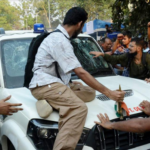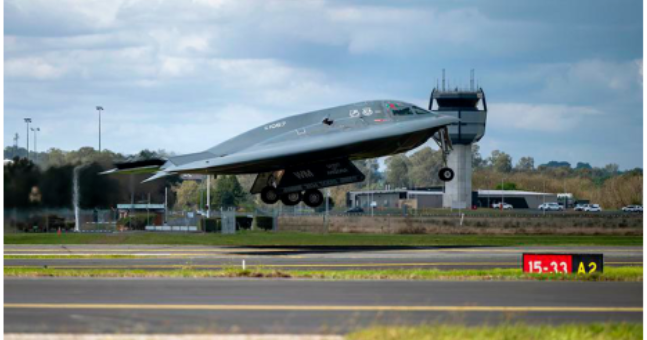Yemen On October 12, 2024, the U.S. military launched a strategic airstrike targeting Houthi rebel facilities in Yemen using B-2 Spirit bombers, marking a significant escalation in the ongoing conflict. The strike comes amid rising tensions in the region, particularly in the context of Houthi missile and drone attacks on U.S. allies in the Middle East, including Saudi Arabia and the United Arab Emirates (UAE). This move signals a shift in U.S. military engagement in Yemen, which has largely been limited to indirect support for the Saudi-led coalition. This article explores the details of the strike, its significance, and its broader implications for regional stability and U.S. foreign policy.
2. The B-2 Spirit Bomber: A Formidable Weapon of War
The B-2 Spirit bomber, a stealth heavy strategic bomber developed by Northrop Grumman, plays a crucial role in U.S. air operations. Known for its ability to penetrate dense anti-aircraft defenses and deliver precision strikes, the B-2 is a critical asset in the U.S. Air Force’s strategic arsenal. The aircraft’s unique radar-evading technology allows it to operate undetected in hostile environments, making it an ideal choice for high-value targets such as the Houthi command-and-control centers in Yemen.
The B-2’s capability to carry both conventional and nuclear weapons further highlights the seriousness of the strike. Although the Yemeni facilities targeted were struck with conventional bombs, the presence of such an advanced aircraft underscores the U.S.’s commitment to countering threats from the Houthi movement, which is backed by Iran and seen as a growing threat to U.S. interests in the region.
3. Details of the Strike
According to statements from the Pentagon, the strike targeted key Houthi military installations, including weapons depots, missile launch sites, and communication hubs in northern Yemen. The facilities were identified as being responsible for coordinating missile and drone attacks on neighboring Gulf states and U.S. interests in the region.
The airstrikes were described as “surgical” and were aimed at minimizing civilian casualties. U.S. officials confirmed that intelligence gathered over several weeks was used to precisely locate these Houthi targets. The B-2 bombers, stationed at a forward base in the region, took off for the mission under the cover of night, ensuring maximum surprise. Initial reports suggest that the strike successfully destroyed all intended targets, severely impairing the Houthi’s operational capabilities.
4. The Houthi Response
In the wake of the strike, Houthi leaders condemned the U.S. attack, calling it an “act of aggression” and vowing retaliation. Houthi spokesperson Mohammed Abdul Salam stated that the airstrike would not go unanswered, warning of increased missile and drone attacks on Saudi and U.S. targets in the region. Houthi forces have proven adept at utilizing Iranian-supplied ballistic missiles and unmanned aerial vehicles (UAVs) to strike key infrastructure in Saudi Arabia and the UAE, raising concerns of further escalation.
The Houthis, who control large swaths of northern Yemen, including the capital city of Sanaa, have been embroiled in a brutal civil war with the Saudi-backed Yemeni government since 2014. Their military capability has evolved significantly over the years, largely due to support from Iran, allowing them to pose a significant threat to their adversaries in the region.
5. The Broader Context of the Yemen Conflict
Yemen’s civil war is one of the most complex and devastating conflicts in the modern Middle East. It began in 2014 when the Houthi movement, which belongs to the Zaidi Shia sect, overthrew the internationally recognized government of President Abd-Rabbu Mansour Hadi. The Houthis, backed by Iran, seized control of northern Yemen, sparking a regional conflict that has drawn in neighboring Gulf states, particularly Saudi Arabia and the UAE, as well as the U.S. and other Western powers.
The Saudi-led coalition, with U.S. support, launched a military intervention in 2015 aimed at restoring Hadi’s government. However, the conflict has devolved into a humanitarian disaster, with thousands of civilians killed and millions displaced. The U.S. has mostly limited its involvement to logistical and intelligence support for the coalition, but the recent strike marks a shift towards more direct military engagement.
The B-2 bomber strike signals that the U.S. is prepared to take a more active role in countering Houthi aggression, especially in light of the group’s growing missile and drone capabilities. In recent years, the Houthis have launched numerous attacks on Saudi oil facilities and other key infrastructure, which has prompted international concerns about the security of energy supplies from the Gulf region.
6. Why Did the U.S. Strike Now?
There are several reasons why the U.S. chose to launch this strike at this particular moment:
a) Growing Threat to U.S. Allies
The Houthis have intensified their attacks on Saudi Arabia and the UAE, both of which are key U.S. allies in the region. The use of Iranian-supplied missiles and drones has allowed the Houthis to strike deep into the territory of these Gulf states, targeting oil refineries, airports, and other strategic assets. These attacks have threatened not only regional stability but also global oil supplies, prompting the U.S. to act decisively.
b) Iran’s Involvement
The Houthi movement is widely seen as a proxy for Iran, which has been accused of providing the group with advanced weapons and logistical support. The U.S. and its allies have long been concerned about Iran’s influence in Yemen and its ability to destabilize the region through its support of militant groups. The B-2 strike is likely intended as a message to Tehran that the U.S. will not tolerate Iranian-backed aggression in the Gulf.
c) Strategic Timing
The strike comes at a time when the U.S. is recalibrating its Middle East policy. With growing geopolitical tensions between the U.S. and Iran, and a focus on reducing troop presence in other conflict zones such as Afghanistan, the U.S. may be signaling its intent to focus more on countering Iranian influence in Yemen and across the Gulf.
7. Regional and International Reactions
The U.S. airstrike on Houthi facilities has elicited a range of reactions from regional and international players:
a) Saudi Arabia and the UAE
Both Saudi Arabia and the UAE have welcomed the U.S. strike, viewing it as a critical move to curb Houthi aggression. These Gulf states have borne the brunt of Houthi missile and drone attacks, and they see increased U.S. military involvement as essential to their security.
b) Iran
Predictably, Iran has condemned the U.S. airstrike, calling it an act of “imperial aggression” and expressing solidarity with the Houthis. Iranian officials have repeatedly denied providing military support to the Houthis, despite mounting evidence to the contrary. Tehran is likely to view this strike as part of a broader U.S. strategy to weaken its regional influence, and it may escalate its own efforts to support the Houthis in response.
c) The United Nations
The UN has expressed concern about the escalation of violence in Yemen, urging all parties to return to the negotiating table. The conflict in Yemen has already caused a catastrophic humanitarian crisis, with millions of Yemenis suffering from food insecurity, disease outbreaks, and lack of access to basic services. The UN has repeatedly called for a ceasefire and peace talks, though these efforts have largely been unsuccessful.
8. Potential Consequences of the Strike
The U.S. airstrike on Houthi facilities has the potential to significantly alter the course of the Yemen conflict and broader regional dynamics. Some of the possible consequences include:
a) Escalation of Violence
The Houthi movement has vowed to retaliate against U.S. interests and its allies, raising the risk of further violence in the region. Increased Houthi missile and drone attacks could target key Saudi and Emirati infrastructure, potentially drawing the U.S. into deeper involvement in the conflict.
b) Strained U.S.-Iran Relations
The strike could further strain U.S.-Iran relations, already fraught over issues such as the Iranian nuclear program and Tehran’s regional influence. If Iran increases its support for the Houthis in response, it could lead to a broader conflict between the U.S. and Iran in the Gulf.
c) Humanitarian Impact
Yemen is already facing one of the world’s worst humanitarian crises, and an escalation of violence will only exacerbate the suffering of the Yemeni population. Airstrikes, missile attacks, and continued fighting could hinder humanitarian aid efforts, leaving millions of Yemenis without access to food, clean water, and medical care.
9. Conclusion: What Lies Ahead for Yemen and U.S. Policy?
The U.S. B-2 bomber strike on Houthi facilities in Yemen marks a turning point in the conflict, signaling that the U.S. is willing to take a more direct role in countering Houthi aggression. While the immediate impact of the strike may temporarily weaken the Houthi military infrastructure, the long-term implications are far more complex.
With the potential for further escalation, increased Houthi retaliation, and deeper U.S. involvement, the future of Yemen remains uncertain. The international community, particularly the UN, must redouble efforts to broker peace and address the underlying issues fueling the conflict, while the U.S. navigates the delicate balance between supporting its allies and avoiding deeper entanglement in a protracted war.
The coming months will reveal whether this strike serves as a deterrent or merely a precursor to further violence, but one thing is certain: the conflict in Yemen is far from over. ALSO READ:-25 Killed, Including a Mayor, in Israeli Strikes in Lebanon: A Critical Escalation in Regional Tensions





